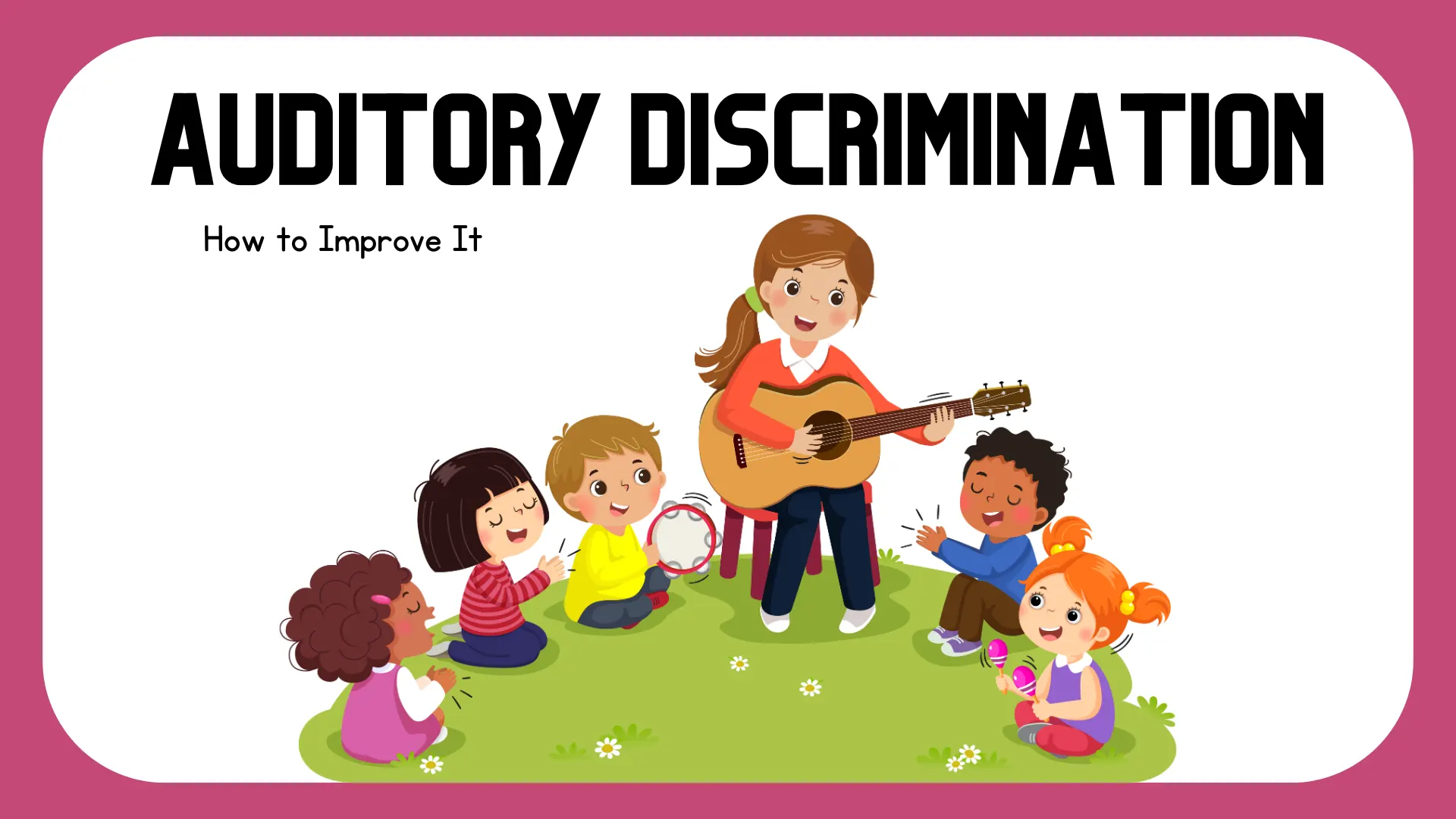Why does a child with seemingly normal hearing still mishear instructions or confuse words like bat e pat? Why do some children struggle to recognize rhymes, follow multi-step directions, or keep up with reading and spelling tasks, even when they appear attentive? And why do classroom environments filled with background noise make these challenges even harder? These are common concerns that leave many parents and teachers searching for answers.
In the following sections, we’ll explain exactly what children’s auditory discrimination is, why it matters, and how parents and educators can apply effective, research-backed strategies to improve it.
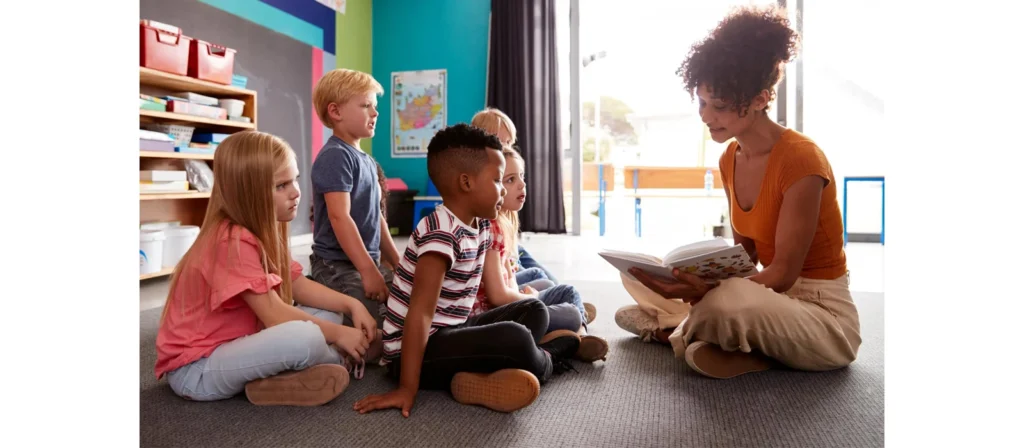
What is Auditory Discrimination?
Auditory discrimination is the ability to hear differences between sounds and recognize when they are the same or different. In simple terms, it’s how the brain processes sound details after the ears detect them. For example, a child who can tell the difference between bat e pat is using auditory discrimination.
It’s important to note that auditory discrimination is not the same as hearing. Hearing refers to the physical detection of sound, while auditory discrimination involves interpreting those sounds and noticing contrasts. A child may pass a basic hearing test but still have difficulty with discrimination if their brain struggles to process subtle differences.
Why is Auditory Discrimination Important?
Auditory discrimination is the foundation of language learning, especially reading and spelling. Children must first be able to recognize and separate phonemes, the smallest units of sound, in order to connect spoken words to written symbols. Without accurate phoneme discrimination, words like sip e ship may sound the same, making it difficult to decode words, spell correctly, or develop fluent reading skills. In other words, strong auditory discrimination provides the basic building blocks for literacy.
Beyond literacy, auditory discrimination also shapes how children listen, speak, and interact in daily life. In the classroom, it allows them to filter important sounds from background noise, follow instructions, and understand fast-paced speech. At the same time, this skill helps children refine their own pronunciation by comparing what they hear with what they produce. Clearer speech leads to better communication, which builds confidence in social settings and reduces misunderstandings with peers and teachers.
Finally, auditory discrimination contributes to broader cognitive growth. Distinguishing sounds requires focused attention, working memory, and sequencing skills, all of which are crucial for academic learning and problem-solving. Strengthening auditory discrimination therefore not only supports language and communication but also enhances a child’s ability to process information, concentrate, and think critically.
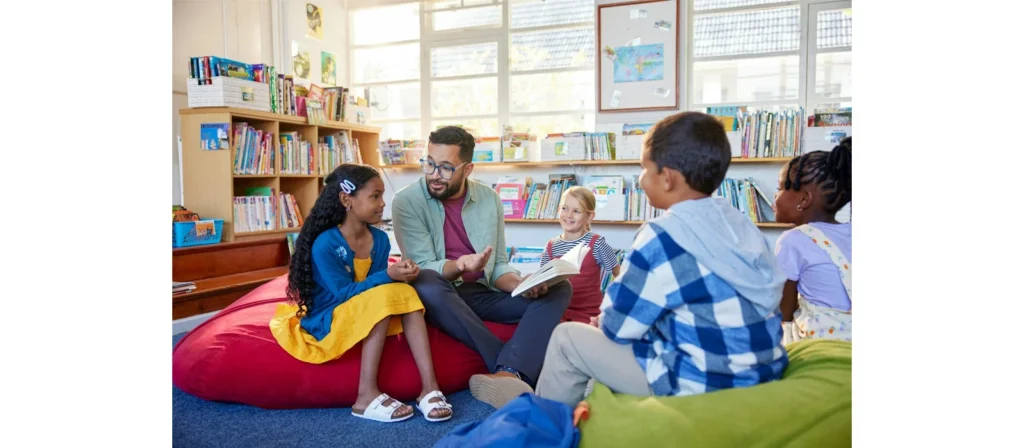
Key Auditory Discrimination Skills
Auditory discrimination is not a single ability but a set of interconnected skills that work together to help children process sounds accurately. These skills enable them to recognize larger sound patterns, identify individual phonemes, and manage speech in noisy environments. Understanding the different components of auditory discrimination makes it easier for parents and educators to identify where a child may need support and to choose the right auditory discrimination activities or exercises. The three main areas include phonological awareness, phonemic awareness, e speech-in-noise perception.
Phonological awareness
Phonological awareness is the broader ability to recognize and manipulate sound structures in spoken language. This includes skills such as identifying rhymes, breaking words into syllables, and noticing patterns in rhythm or stress. A child with strong phonological awareness can tell that cat e hat sound alike, or that banana has three syllables. These abilities rely on auditory discrimination because the child must detect similarities and differences across larger sound units. Strength in this area provides a foundation for early reading readiness.
Phonemic awareness
Phonemic awareness is more specific and refers to the ability to focus on and manipulate individual phonemes, the smallest units of sound. This is where phoneme discrimination becomes crucial. Children must be able to hear the difference between /p/ and /b/ or between /t/ and /k/ in order to spell and decode words accurately. Weakness in this skill often results in difficulties with phonics, leading to errors in reading and writing. Targeted auditory discrimination exercises such as minimal pair activities can strengthen phonemic awareness and build a solid bridge between spoken and written language.
Speech-in-noise perception
Real-life listening rarely happens in silence. Speech-in-noise perception is the skill of recognizing and understanding speech when background noise is present. This ability depends heavily on sound discrimination, as the child must separate the relevant speech signal from competing sounds. In classrooms, this skill is especially important because children need to follow lessons and instructions even in noisy environments. Weak speech-in-noise perception can make children appear inattentive when the real challenge is auditory discrimination. Training activities, as well as structured support through auditory discrimination speech therapy, can improve this ability and help children manage real-world listening demands.
Together, these skills form the core of auditory discrimination. Each contributes in different but complementary ways to a child’s literacy, communication, and learning success.
Effective Auditory Discrimination Activities
Auditory discrimination improves when children engage in playful and focused listening tasks. The following activities are simple, enjoyable, and suitable for daily practice.
Listening walk
Take children on a short walk and encourage them to notice and name the sounds they hear, such as birds, footsteps, or traffic. This activity heightens awareness of environmental sounds and helps children connect listening with real-world experiences.
Guess the instrument
Play recordings of different musical instruments and ask children to identify each one. Children learn to recognize differences in pitch, tone, and timbre, which strengthens sound discrimination and sharpens memory.
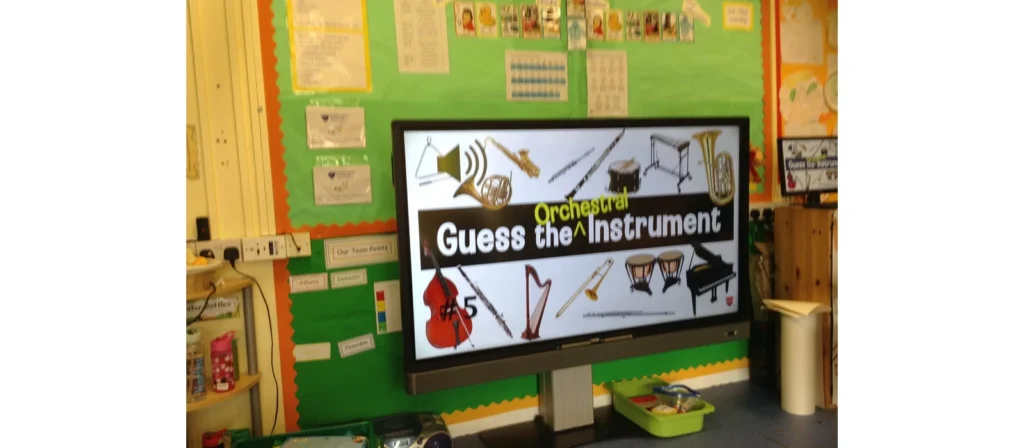
Animal sounds
Play animal noises and ask children to match them with the correct animal name. This playful task engages attention and builds listening accuracy while reinforcing word–sound associations.
Rhyme cards
Show pairs of words on flashcards and ask children to find the rhyming match, such as cat with hat. This strengthens phonological awareness and helps children recognize repeating sound patterns in language.
Clap the rhyme
Use clapping or chanting to highlight rhyming words and rhythmic patterns in short verses. Combining movement with sound keeps children engaged and supports memory.

Count the words
Read short sentences aloud and ask children to count how many words they hear. This activity trains them to listen carefully, identify word boundaries, and improve sentence-level comprehension.
Clap the syllables
Say words aloud and have children clap for each syllable. For example, ba-na-na gets three claps. This builds awareness of sound segments in spoken language and prepares children for spelling.
Sort the sounds
Give children a set of words or pictures and ask them to group items by beginning, middle, or ending sounds. This sharpens auditory discrimination for phoneme placement and reinforces sound–symbol connections.
Find the odd sound
Say a group of three words and ask children to pick the one that sounds different, such as cap, cat, dog. This activity encourages attention to subtle contrasts and develops phoneme discrimination.
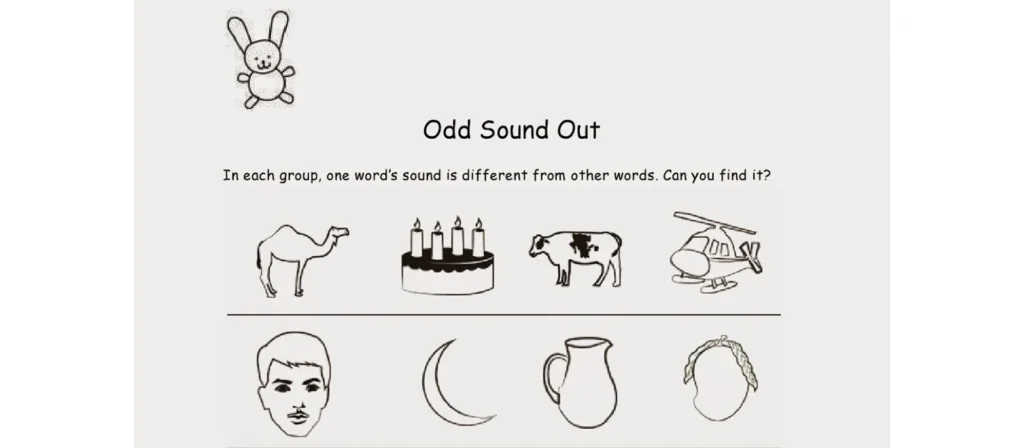
Match the sounds
Say two words and ask children whether the words begin, end, or rhyme with the same sound. This builds flexibility in sound comparison and improves awareness of how sounds function in language.
Who’s speaking?
Play a game where different voices say the same word or phrase, and children must identify the speaker. This strengthens attention to vocal features like pitch and tone and helps children distinguish between speakers in real situations.
Sound puppet
Use a puppet that likes only certain sounds or words. Children feed the puppet correct sounds or words while rejecting incorrect ones. This interactive activity reinforces phoneme discrimination and makes learning more engaging.
Copy the sound
Make short sounds such as tapping, clapping, or snapping and ask children to identify or repeat them. This improves listening precision, builds auditory memory, and trains children to attend to sound details.

Sound bingo
Create bingo cards with pictures representing sounds such as a bell, dog, or drum. Play the corresponding sounds and have children mark the matches. This combines focused listening with the fun of a game, keeping motivation high.
Sound hunt
Give children a magazine and ask them to find words or pictures that start with a specific sound. This activity connects auditory discrimination to literacy practice and encourages children to apply listening skills in a creative way.
In summary, these auditory discrimination activities are designed to be varied yet accessible. They train children to notice environmental sounds, sharpen phoneme discrimination, and build stronger connections between listening and language. With regular practice, these activities lay a solid foundation for reading, communication, and overall learning success.
Challenges and Disorders Related to Auditory Discrimination
Among the conditions linked to auditory discrimination, Auditory Processing Disorder (APD) is one of the most significant. APD is not a problem with hearing itself but with how the brain processes and interprets the sounds that the ears detect. Children with APD may have normal hearing test results yet still struggle to understand spoken information, especially in situations that require precise sound discrimination.
APD is closely tied to auditory discrimination because accurate processing of sound contrasts is central to language development. Weakness in this area may limit phoneme discrimination, reduce listening efficiency, and slow the acquisition of literacy skills. In more complex listening environments, such as noisy classrooms, these difficulties become even more apparent, making it harder for children to follow instructions and engage in communication.
Early identification of APD is essential. A comprehensive evaluation, including an auditory discrimination test, can help determine the nature of the difficulty and guide intervention. Targeted auditory discrimination exercises, auditory bombardment techniques, and structured speech therapy have been shown to strengthen sound processing abilities. With timely intervention, children with APD can make significant improvements in listening, language development, and overall communication.
Supporting Children’s Listening Journey
Auditory discrimination is a cornerstone of children’s language, literacy, and communication. When this skill is strong, children can recognize sound differences, develop clear speech, and build confidence in both academic and social settings. When difficulties arise, however, they can affect reading, listening, and everyday communication.
The good news is that auditory discrimination can be improved through consistent practice, engaging activities, and, when needed, professional support. Strategies such as sound-based games, phoneme exercises, environmental adjustments, and speech therapy provide children with valuable opportunities to strengthen their listening skills.
For parents, teachers, and caregivers, the key is early attention and ongoing support. By fostering a sound-rich, supportive environment and encouraging playful listening practice, adults can help children overcome challenges and unlock their full potential in language and learning.

